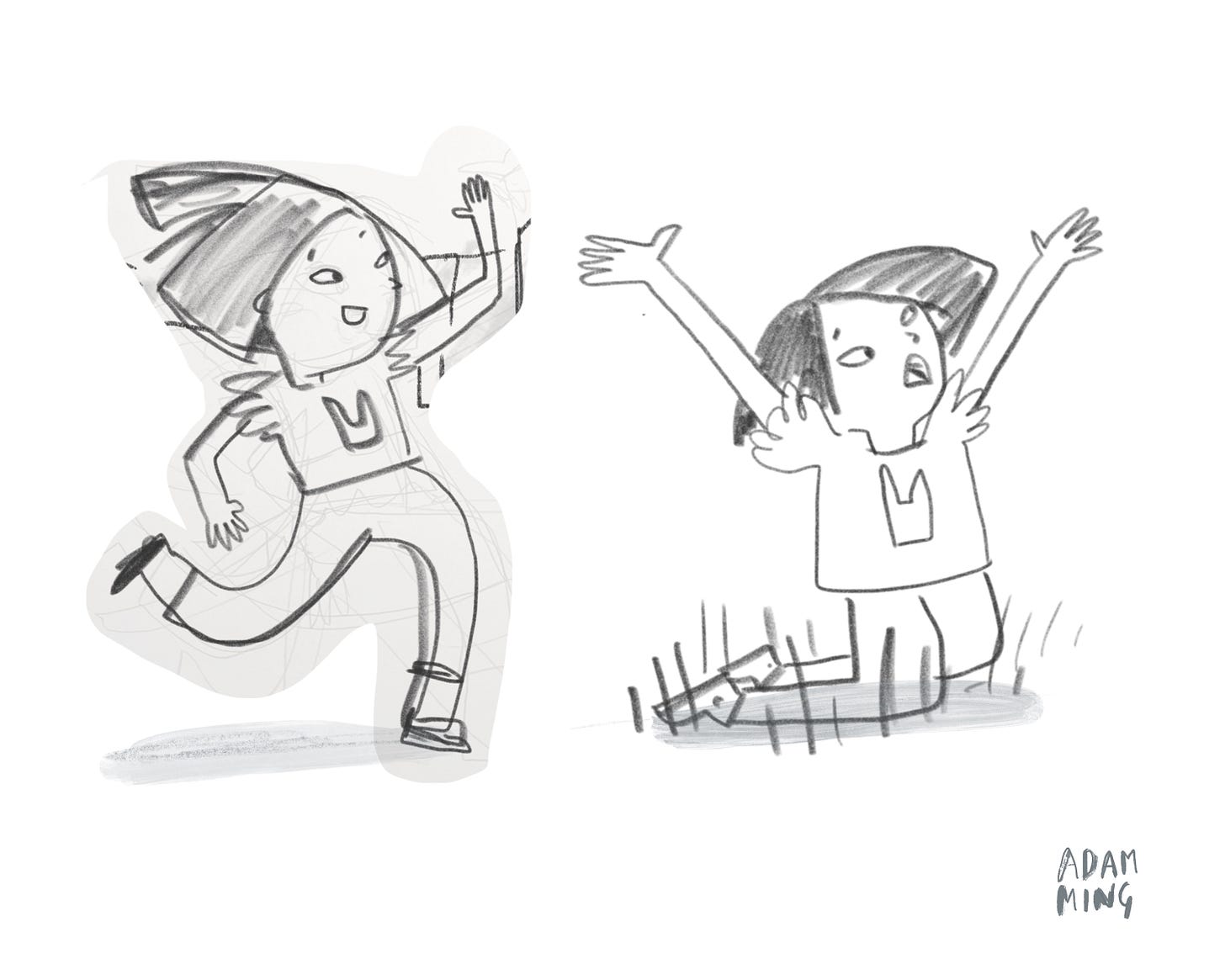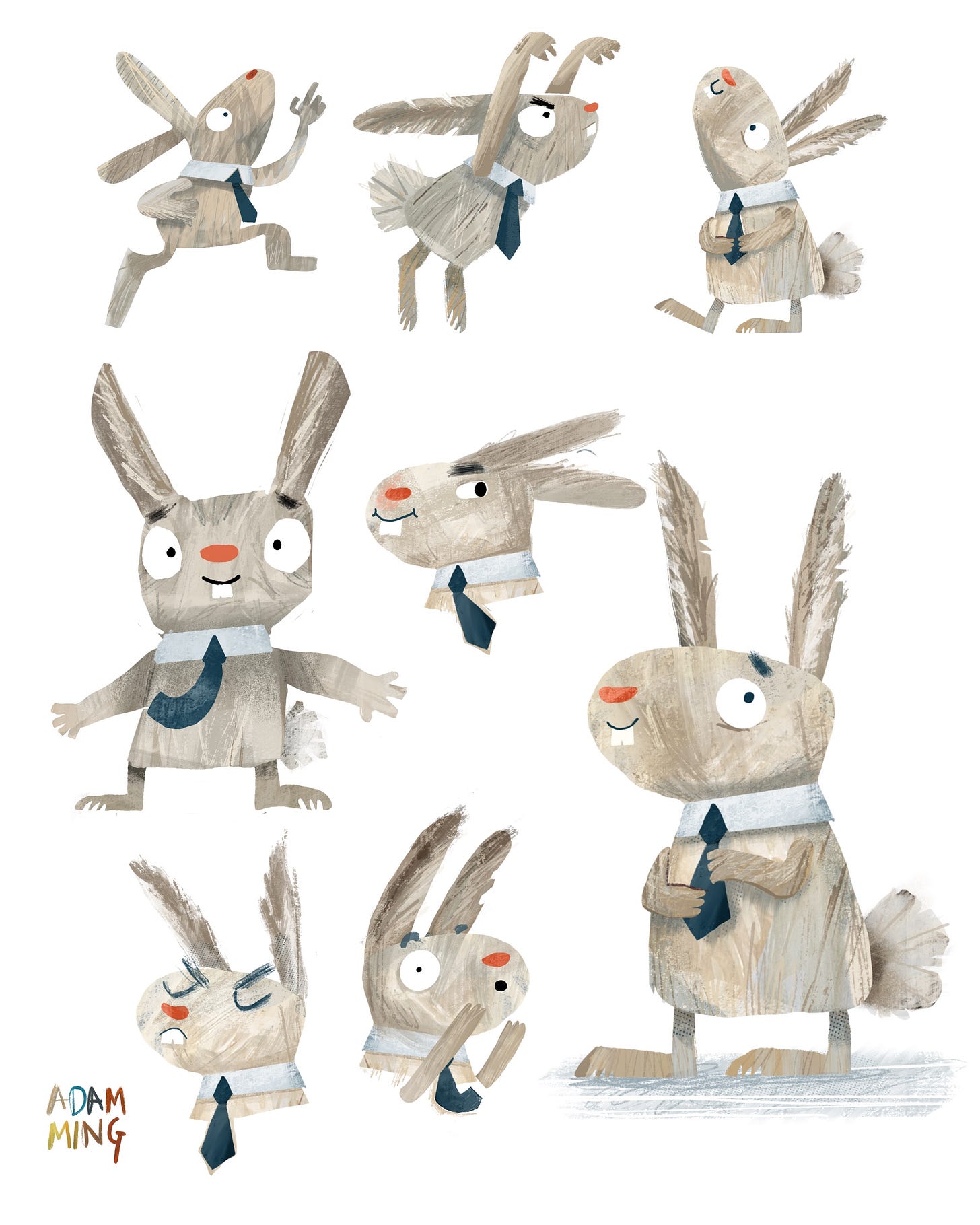Hello Gymartist! (This one’s not that bad is it?)
Over the past two days, we've explored why character consistency matters to young readers and the common mistakes that can derail even experienced illustrators.
Today, I'm excited to share a framework that completely transformed my approach to character consistency. It really is the one thing that made me feel I’ve gone from being a student to a practioner…
But first, I need to share something that might surprise you...
The Missing Ingredient is Character ATTITUDE
While most illustration advice focuses exclusively on visual consistency (proportions, colors, features), I've discovered over years of creating children's books that:
Illustrators are actors performing through their (apple) pencils.
Just as actors must "stay in character" throughout a performance, illustrators must maintain their character's core ATTITUDE across every page and pose.
When you truly understand your character's attitude—their emotional core, their way of approaching the world—visual consistency becomes almost second nature.
The Illustrator-as-Actor Framework
Here's my step-by-step process for creating characters that remain consistent throughout your book:
Step 1: Define Your Character's Core Attitude
Before focusing on how your character looks, define who they ARE:
What emotion drives them most often? (Curiosity? Joy? Mischief?)
How do they react to challenges? (Eagerly? Cautiously? Dramatically?)
What's their energy level? (Bouncy? Mellow? Frenetic?)
What physical characteristic emphasize their personality? (Wide eyes? Expressive hands? Springy posture?)
Write down 3-5 attitude keywords that define your character. These become your emotional anchors.
Step 2: Translate Attitude into Visual Language
Now connect your character's attitude to specific visual elements:
How does their attitude affect their posture?
What facial expressions reflect their core personality?
How do they move through their world?
What gestures or body language are signature to them?
Create quick sketches exploring how attitude manifests visually.
Step 3: Create Your Character Performance Guide
Develop a reference guide that captures both technical specifications AND attitudinal markers:
Technical: Proportions, color palette, shape relationships
Attitudinal: Signature poses, expressions, energy lines
Performance notes: "Always leads with curiosity" or "Stands tall even when afraid"
Step 4: Warm-up with Character Improv
Before drawing each page, spend 2-3 minutes "getting into character":
Sketch your character in quick poses that reflect their attitude
Ask yourself: "How would THIS character react in THIS situation?"
Focus on capturing their essence before refining details
This warm-up process is like an actor's preparation before stepping on stage.
Why This Works: The Consistency Beyond Visuals
When you approach illustration as a character performance, something magical happens. Even if small visual details vary slightly, readers will still recognize your character because you've maintained their essential nature—their ATTITUDE.
This is why children instantly recognize their favorite characters even when drawn in different styles or from challenging angles. The attitude shines through.
Quick Exercise: Character Attitude Check
Take your current project and ask:
Have I defined my character's core attitude?
Does this attitude come through consistently on every page?
Am I "performing" my character rather than just drawing them?
Tomorrow: I'll answer the most common questions about maintaining character consistency when facing challenging scenarios (like complex emotions or unusual perspectives).
Happy performing,
Adam
P.S. I'm curious - have you ever thought of yourself as performing a character rather than just drawing one? Reply and let me know!
Art Gym Members: I hope all this is getting you warmed up and excited for the upcoming Character Consistency Workshop on 17th of April, RSVP Here to reserve your spot!
Not a member yet? I love sharing these lessons but the real change happens when you practice. Art Gym is a fun’s and safe place for us to practice and develop new skills, I gain new skills every single time I take one of these sessions. You’ll be in the company of people at all levels, and get trained by 2 instructors!
Best part you’ll always walk away with pages and pages of your sketchbook filled!









That's a really interesting and helpful perspective! I haven't thought of myself as performing a character but I have caught myself making the faces I am drawing on my characters; scowling when drawing a frustrated kid with her arms crossed, or grinning proudly when drawing a proud dog. 😂
So far, there are only a few characters I've worked with, and I've tried to be consistent. (Not sure if I've succeeded). But I usually try to get into the character's skin and draw their reactions and behavior from that perspective.